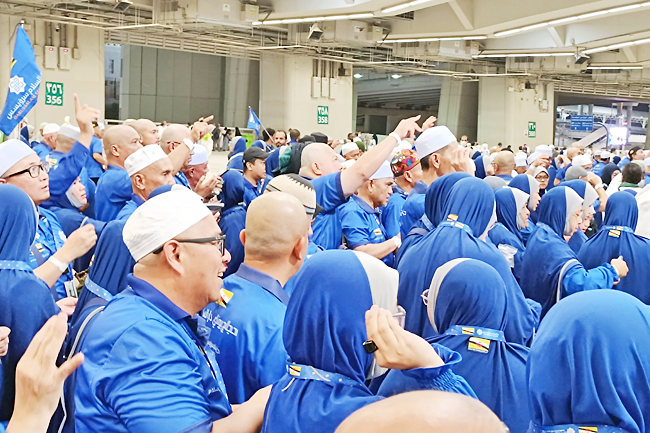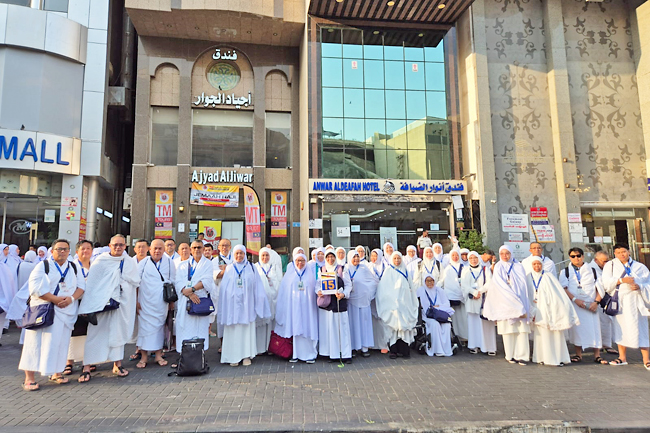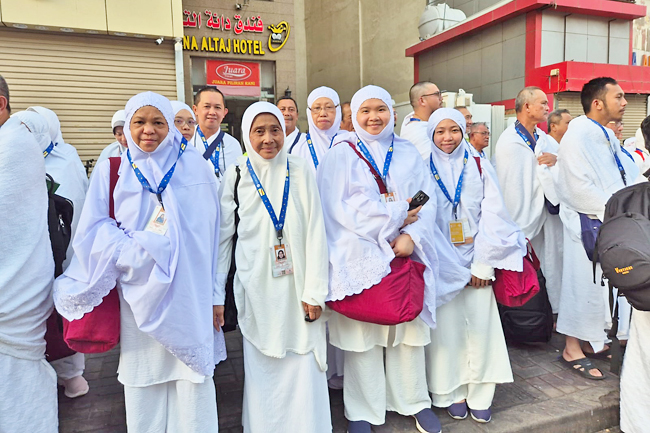The day of Arafah (Yawm Al-Arafah), also known as the day of the standing (Yawm Al-Waqf – or wuquf in Arafah for us in Brunei), holds immense significance as the holiest day in the Islamic lunar calendar, akin to Lailatul Qadr, the night of empowering decree in Ramadhan.
Falling on the ninth day of Zulhijjah, the 12th month of the Islamic calendar, it marks a pivotal moment during the haj pilgrimage to Makkah, which Muslims are obliged to undertake at least once in their lifetime if physically and financially able. Prophet Muhammad (pbuh), emphasised the centrality of Arafah to the haj, stating, Al-Hajj Arafah, meaning Arafah itself is haj (Ahmad).
Without fulfilling the wuquf (standing) at Arafah from just before noon until sunset, haj remains incomplete.
This unique ritual sees pilgrims clad in the simple, symbolic attire of ihram gathering on the vast plain of Arafah to beseech Allah the Almighty’s mercy, forgiveness, and acceptance of their prayers. It is from this act of standing steadfast before the divine that the day derives its name, Yawm Al-Waqf.
The landscape of Arafah, a sprawling desert plain about 19 kilometres southeast of the Kaabah in Makkah, includes the prominent Jabal Arafah or mount of mercy, a granite hillock where pilgrims converge.
This sacred site holds deep spiritual significance, believed to be where Prophet Adam (pbuh) and Eve, after their expulsion from Paradise, reunited – the word Arafah itself connoting reunion and recognition.
Arafah, rich with history and symbolism, stands as a profound expression of faith and human connection, marking a pivotal moment in the pilgrimage where millions of hearts and souls unite in devotion and prayer.



A GATHERING OF PILGRIMS IN ARAFAH
The peak day of wuquf in Arafah fell on June 15 this year, as millions of pilgrims eagerly converge in the holy land, marking a pivotal moment in their haj pilgrimage. Among them were 630 pilgrims from Brunei Darussalam, all awaiting this sacred day with anticipation.
Since the early hours, pilgrims gathered at their designated hotels, preparing to embark on the wuquf day in Arafah – a fundamental pillar of the haj. This year, stringent controls and regulations by the Saudi Arabian government were implemented in response to the misuse of pilgrimage and tourism visas.
Despite the journey to the Arafah field taking several hours, Saudi security authorities ensured a well-organised and orderly process.
Pilgrims were accommodated in Camp 112 under the management of Maktab Raub Mina, providing them with air-conditioned tents and meals throughout their stay.
The programme at the Arafah Field, overseen by the Bi’thah Administration at the Ministry of Religious Affairs, included readings of the Arafah Khutbah and Arafah Zikir led by Pengiran Haji Reduan bin Pengiran Haji Badaruddin.
Pilgrims were encouraged to spend this blessed day increasing their prayers and recitation of the Al-Quran, recognising it as a special time when Allah the Almighty bestows abundant grace and accepts all prayers.
In the afternoon, following the Asar prayer, the Bruneian pilgrims were gathered in front of their tents for a continued prayer reading event led by Haj and Umrah Executive Officer Haji Abdul Aziz bin Haji Abdul Rahman at Darussalam Services Sdn Bhd.
Later in the evening, at 9.30pm, pilgrims embarked on their wuquf journey, proceeding to cross Muzdalifah until midnight, before continuing on to Makkah Al-Mukarramah to complete the tawaf ifadhah and haj saei.
After fulfilling these rites and performing tahallul, the pilgrims commenced their journey to Mina, where they would stay until 12th of Zulhijjah, known as Nafar Awal.
This journey through the sacred rites of haj embodies the unity of faith and the fulfilment of spiritual obligations, enriching the pilgrims with profound experiences that transcend geographical and cultural boundaries.
THE RITE OF JAMRAH IN MINA
After their profound experience in the Arafah Field, crossing Muzdalifah, and completing the tawaf and haj saei, the pilgrims embarked on the next leg of their pilgrimage on 10th of Zulhijjah 1445 Hijrah, corresponding to June 16, to Mina where they would fulfil the obligation of throwing jamrah.
The Stoning of the Devil, known in Arabic as ramy al-jamrah or “throwing at the jamrah”, forms another integral part of the annual Islamic haj pilgrimage to the sacred city of Makkah in Saudi Arabia.
This ritual holds profound symbolic significance as Muslim pilgrims gather in the city of Mina, just east of Makkah, to hurl pebbles at three walls, historically pillars, known as jamrah.
This act commemorates the haj of Prophet Ibrahim (pbuh), who, according to Islamic tradition, stoned three pillars representing the devil and the temptation to disobey Allah the Almighty’s will.
The ritual is a symbolic re-enactment of Prophet Ibrahim’s (pbuh) unwavering faith and his rejection of temptation, illustrating the steadfastness required in the face of spiritual trials.
Departing from Makkah at 1.30pm aboard 15 buses, the pilgrims arrived at the Mina camp by approximately 3.00pm. The commencement of the Mabit programme in Mina began with the ritual of throwing jamrah Al Aqabah at 7.30pm, following the Maghrib prayer.
Staying in the Mina camp until 12th of Zulhijjah, known as Nafar Awal, the pilgrims continued to perform the ritual of throwing three jamrah on 11th and 12th of Zulhijjah.
Alongside these rites, the pilgrims engaged in various programmes, including Quranic recitations (Halaqah), emphasising the importance of prayer and Quranic reading on this blessed occasion. On the final night in Mina, a Khatam Al-Quran and Thanksgiving prayer ceremony were held, accompanied by Dikir Marhaban performed by members of the pilgrim group.
Following their spiritual commitments amidst scorching temperatures exceeding 45 degree Celsius, the pilgrims exhibited resilience and fortitude, embracing their role as guests of Allah the Almighty with unwavering dedication. May their haj be accepted as mabrur – a haj blessed and approved by Allah the Almighty.
Subsequently, the pilgrims remained in Makkah and Jeddah for several days to finalise their return to Brunei Darussalam, with flights scheduled on June 23, 24 and 25, marking the conclusion of their sacred pilgrimage journey. – Rokiah Mahmud





